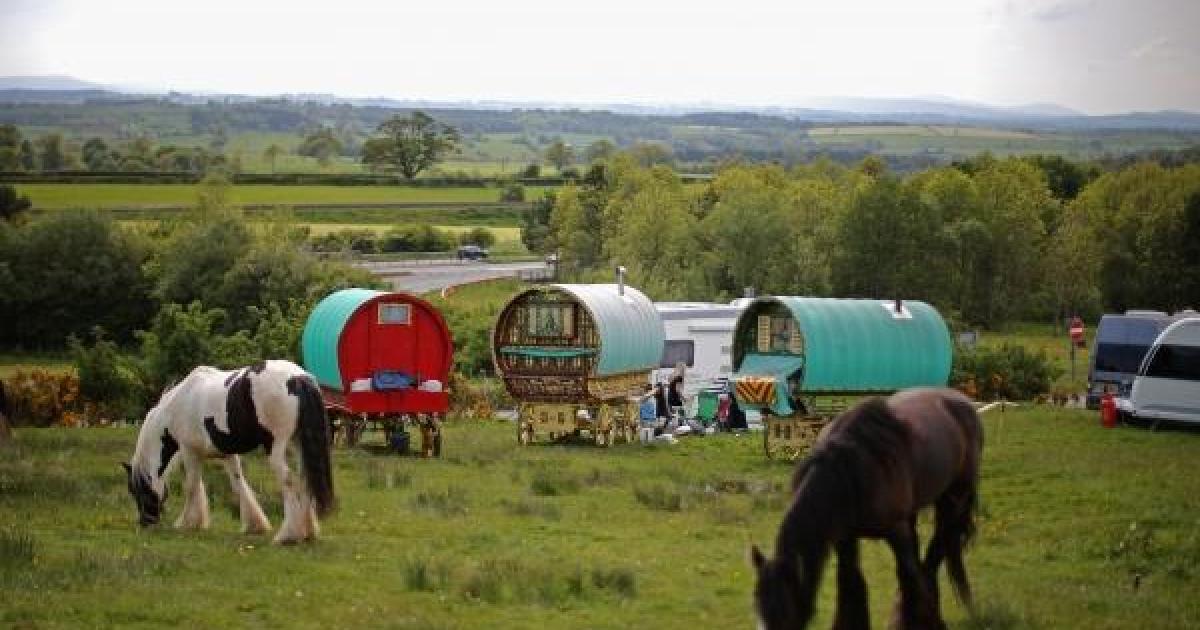Titled “A Curious Episode of Balquidder: Placenames in the North and Nackens,” Fell wove a narrative to give the audience an idea of Scotland’s place names through the eyes of Nackens and highlight the importance of this practice.
This was the Alan Bruford Lecture, an event in memory of the late archivist, academic, teacher, and fieldworker who passed in 1995. Bruford’s daughter and grandson were in the audience for the event.
READ MORE: Campaigners welcome new law as ‘big step’ on Scotland’s rewilding journey
McPhee grew up and still lives at Bobbin Mill near Pitlochry and Fell was instrumental in collecting evidence for the Scottish Government from the site which led to their official apology in June for how Travellers were treated during the so called “tinker experiments”.
Between 1940 and 1980, the so-called “tinker experiment” – supported by councils and the UK Government – attempted to strip away the nomadic lifestyle of the community, providing rudimentary and often cramped huts for people to live in.
The spotlight was swiftly put on the Nackens – the Scottish Gypsy Traveller or Traveller Community. The term charged with political and social connotations was not to be the focus of the event, with the preferred Nackens used throughout – after it was noted the 2022 census’s use of the overarching term with the appreciated addition of Roma, and the hopes for the 2030 census to include several different options.
We were taken from 998 AD and the Ghaznavid Raids to 1505, the first official record of “Egyptians” in Scotland, and along the long history of the term Nackens, Tinkers and Gypsies.
Nackens can be sometimes referred to as Nockens, but as McPhee pointed out, the latter is theorised to have been derived from the Anglo-Romanic language rather than the Scoto-Romanic which uses the “a” sound – which, he believes, is why it is correct to use Nackens in Scotland.
Shamus McPhee and sister Roseana outside the Scottish Parliament after giving evidence in 2017
Referring to a source which states, “These differences are perhaps to be explained by regarding the majority of present-day English Gypsies as descendants of a later immigration than that of those who left their mark on the Tinkler Cant of Scotland.
McPhee concludes: “So we got here first”. Laughter is heard all around.
The lecture moved to its titular point of place names. Lasswade, 7 miles south of the Centre, was our first stop – followed by Rosehearty in Aberdeenshire and the finale in Balquidder, just south of Pitlochry.
The pair took turns in explaining the history, context, academic analysis and of course, the stories and folktales, behind the names. Each reflected unique social, political and cultural factors which have had an impact on Scotland’s history and how it is only in the last few decades, the role of the Nacken’s is being recognised in their naming.
But why is it important?
The purpose of the lecture was, according to Dr Fell, was “to show that by paying close attention to the narrative voices that come from the community, much safer conclusions can be drawn about the nature of the Nacken folkloric idiom”.
He concluded: “Shared understandings around history, folklore, place names, ancestry, and local knowledge are the key identity markers within this living heritage.
“There’s also a deep irony embedded within this idiom, where cultural differentiation and inclusion is negotiated beneath the surface, as Alan Bruford rightly observed at the top of this presentation, Nackens kept Scottish storytelling traditions alive, while they also invented a good many for themselves.
“And all this while suffering persistent and sometimes abhorrent persecution.”
Work by Bruford, Fell and others, shows how a living heritage can be understood as a unique ecosystem in which Nacken tradition bearers interact with their history, making sense of they often challenging the world around them and affirming our granite sense of cultural identity, and an abiding creativity.
The pairing of Fell and McPhee was succinct and engaging. With Fell leading the academic analysis and McPhee providing authentic context, the two met in the middle at the hearth where, of course, we find the stories.
